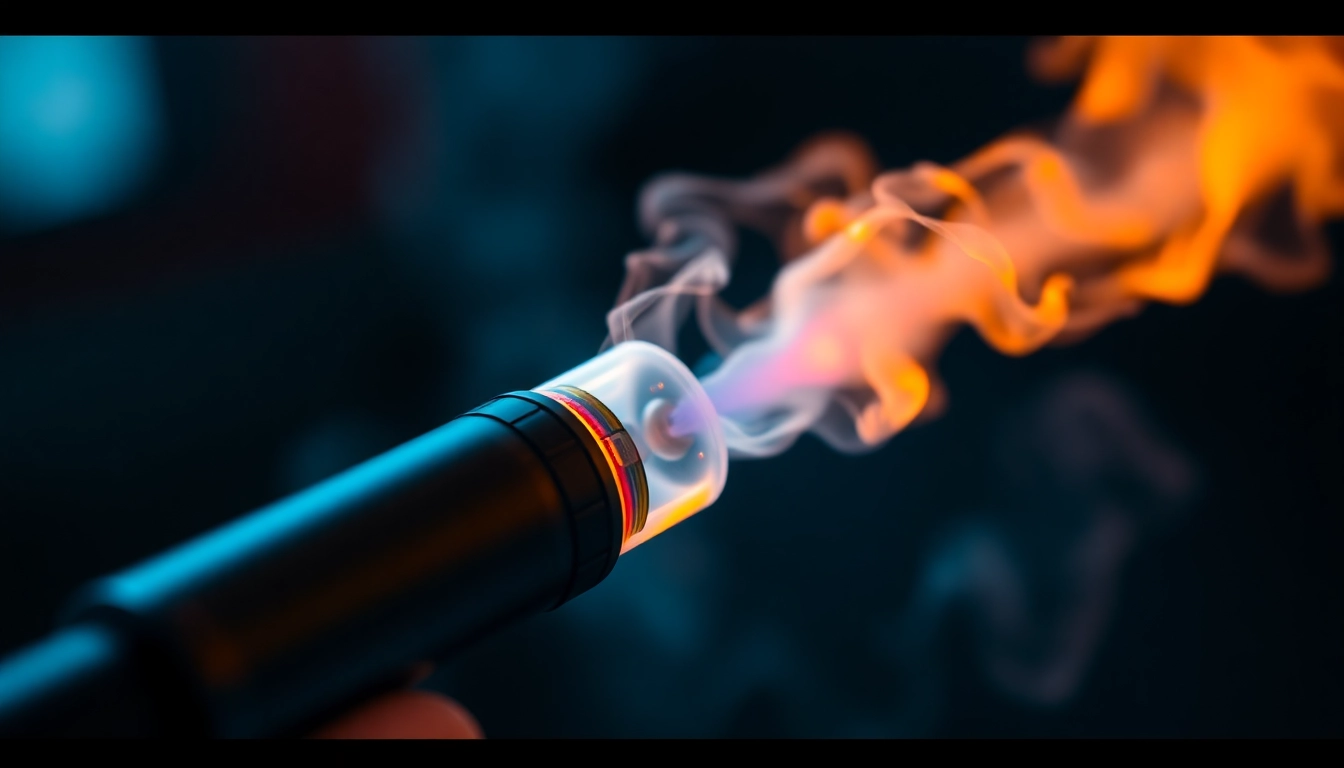Introduction to E-cigarettes: What You Need to Know
Over the past decade, the landscape of smoking cessation and nicotine consumption has undergone significant transformation, largely driven by the advent of electronic cigarettes, commonly known as vape devices or vapes. These innovative devices have gained tremendous popularity worldwide, offering an alternative to traditional tobacco smoking. If you’re considering transitioning from combustible cigarettes or exploring new ways to enjoy nicotine, understanding the core aspects of e-cigarettes is essential. For comprehensive options and quality products, visit our dedicated E-cigarette section to learn more about the latest vaping innovations and deals.
In this article, we will delve into the fundamental components of e-cigarettes, explore different types on the market, discuss safety and usage practices, and examine emerging trends and regulations shaping the industry today.
Definition and Basic Components of an E-cigarette
An e-cigarette is a battery-operated device designed to simulate the experience of smoking tobacco without combustion. Instead of burning tobacco, these devices heat a liquid—commonly called e-liquid or vape juice—that contains nicotine, flavorings, and other chemicals, producing a vapor that users inhale. According to Wikipedia, an electronic cigarette typically consists of three primary components:
- Atomizer: The heating element that vaporizes the e-liquid.
- Power source: Usually a rechargeable battery that supplies energy to the atomizer.
- Cartridge or tank: Holds the e-liquid and feeds it to the atomizer for vaporization.
The simplicity of design allows e-cigarettes to be portable, discreet, and customizable, making them suitable for both novice users and experienced vapers.
Types and Styles of E-cigarettes on the Market
The variety of e-cigarettes available today caters to diverse user preferences, from beginners seeking simplicity to seasoned vapers pursuing advanced customization. Broadly, e-cigarettes can be categorized into several styles:
1. Cigalike Devices
These resemble traditional cigarettes in size and shape, making them ideal for newcomers. They often come as disposable or rechargeable kits with pre-filled cartridges, providing ease of use.
2. Vape Pens
Vape pens are slightly larger and more powerful than cigalikes, offering better battery life and vapor production. They often feature refillable tanks and allow for flavor experimentation.
3. Box Mods and Advanced Vapor Systems
Designed for experienced users, box mods provide extensive temperature control, adjustable wattage, and customizable settings. They often utilize larger batteries and can accommodate larger tanks for prolonged vaping sessions.
Furthermore, the market offers pod systems, which are small, portable devices with pre-filled or refillable pods, favored for their convenience and sleek design. The choice of device depends largely on user experience, desired vapor production, and nicotine intake preferences.
How E-cigarettes Mimic Traditional Smoking
The primary appeal of e-cigarettes lies in their ability to simulate the sensory experience of smoking tobacco. They replicate the hand-to-mouth action, the visual cue of vapor, and the satisfying inhalation process. Modern e-liquids are available in a wide spectrum of flavors, from tobacco and menthol to fruit and dessert profiles, further enhancing realism and enjoyment. The vapor produced visually resembles cigarette smoke but contains significantly fewer harmful chemicals, making vaping a perceived safer alternative.
Additionally, many devices allow users to control nicotine levels, tailoring the experience to their preferences or requirements for nicotine reduction. Technological advancements have led to devices that produce dense clouds of vapor, satisfying those seeking potent hits, while others focus on discreet, low-output options for stealth vaping.
Choosing the Right E-cigarette for Your Needs
Factors to Consider: Nicotine Content, Vapor Production, and Design
Selecting an appropriate e-cigarette involves analyzing key factors:
- Nicotine concentration: From nicotine-free to high-strength options, choosing the right level impacts satisfaction and health considerations.
- Vapor production: Larger devices tend to generate more vapor, appealing to cloud chasers, while smaller devices suit discreet use.
- Design and ergonomics: Comfort, portability, and ease of use influence daily satisfaction and adherence.
Popular Brands and Product Comparisons
Leading brands such as Vaporesso, Smok, and Aspire offer a range of products tailored to different experience levels and preferences. When comparing devices, consider specifications like battery capacity, tank size, flavor compatibility, and user reviews. High-quality devices tend to feature advanced safety protections, user-friendly interfaces, and durable construction, ensuring a safe and rewarding vaping experience.
Starting Tips for Beginners
Beginners should start with simple, user-friendly devices, gradually exploring higher-powered options as they gain familiarity. Always read instructions thoroughly, select e-liquids with appropriate nicotine levels, and keep spare batteries and accessories handy. Joining online forums or local vaping communities can provide valuable insights, troubleshooting tips, and support during your transition.
Safe Usage Practices and Health Considerations
Potential Health Risks and Benefits
While e-cigarettes are generally considered less harmful than traditional cigarettes, they are not without risks. The inhalation of vapor containing nicotine can lead to addiction, and some flavoring chemicals may pose respiratory health concerns. Nonetheless, numerous studies suggest that vaping can significantly reduce health risks associated with smoking. It’s crucial for users to stay informed and make choices aligned with their health goals.
Proper Maintenance and Usage Tips
For safety and optimal performance, regular cleaning of devices, proper storage of e-liquids, and adherence to manufacturer guidelines are essential. Replacing coils and tanks as recommended prevents flavor contamination and avoids malfunctions. Use authentic, high-quality e-liquids from reputable sources to avoid contaminants and ensure consistent flavor and nicotine delivery.
Understanding Nicotine and Tolerance Levels
Managing nicotine intake is vital for health and satisfaction. Beginners often start with lower nicotine concentrations to ease dependence, gradually reducing as desired. Tolerance levels vary among individuals, so it’s advisable to monitor usage and consult health professionals if aiming for nicotine cessation or reduction.
Vaping Techniques to Maximize Satisfaction
Inhalation Methods and Breathing Styles
Two primary inhalation techniques exist:
- Mouth-to-lung (MTL): Drawing vapor into the mouth first, then inhaling into the lungs, mimics traditional smoking and is preferred for lower nicotine levels.
- Direct-to-lung (DTL): Inhaling directly into the lungs, suitable for more experienced vapers seeking larger vapor clouds.
Adjusting Vapor Intensity and Flavors
Many devices allow customization of vapor density through wattage and airflow adjustments. Experimenting with different flavors can enhance satisfaction; popular options include tobacco, menthol, fruity, or dessert-inspired e-liquids. Consider balancing flavor intensity with vapor production for a personalized experience.
Troubleshooting Common Vaping Issues
Common problems such as dry hits, leaking, or weak vapor can often be resolved through regular maintenance, adjusting airflow, or replacing worn parts. Consult user manuals and online resources for device-specific solutions, and do not hesitate to seek expert support for persistent issues.
Regulations, Laws, and Future Trends
Legal Landscape for E-cigarettes Globally
Vaping laws vary significantly across countries. Some regions have embraced regulation, requiring age restrictions, safety standards, and flavor bans, while others impose outright bans. Staying informed about local laws is essential to ensure compliant usage and purchase. International bodies like the WHO and FDA continue to monitor and regulate the industry, aiming to balance public health concerns with consumer rights.
Emerging Technologies and Flavors
Innovation drives the evolution of e-cigarettes, with developments such as pod systems, temperature control devices, and smarter batteries enhancing user experience. Flavored e-liquids continue to expand, with new, innovative profiles entering the market—though some are subject to bans due to safety concerns.
Predicted Market and User Trends
The vaping industry is projected to experience continued growth, driven by technological advancements, legal clarity, and shifting public perceptions. Increasing adoption for smoking cessation, combined with health-conscious innovation, suggests a future where e-cigarettes play a significant role in nicotine consumption strategies, provided regulations and safety standards evolve appropriately.









